Average sizes and life expectancy for this breed:
Siberian Huskies have gorgeous, thick coats that come in a variety of colours and patterns. Their blue or sometimes multi-coloured eyes and stunning facial masks add to their overall appeal. The Siberian Husky, as the name suggests, originated in the cold climate of Siberia by the Chukchi people. Over the years, these dogs became famed for their hard-work ethic, pulling sleds across icy and snowy terrain.
It’s not difficult to see why many dog lovers are attracted to the Siberian Husky’s wolf-like appearance. However, this is a smart, athletic breed with an independent streak that can make them challenging for novice owners. These dogs are more suited to owners who understand their unique needs. Huskies are working dogs that need plenty of mental and physical stimulation to remain happy. So, ensure you have the time to devote to these impressive canines.
With their eye-catching looks and superb talents, Siberian Huskies have become popular muses with film producers, artists, and writers. This medium-sized working dog holds power, athleticism, and an endearing charm. However, to get the most out of this breed you need to make sure they are well socialised and constantly trained so they understand their place in the pack. This social breed can be an ideal canine companion for active families who can ensure that these dogs get all the attention, exercise, and training they need to thrive.
See available puppies
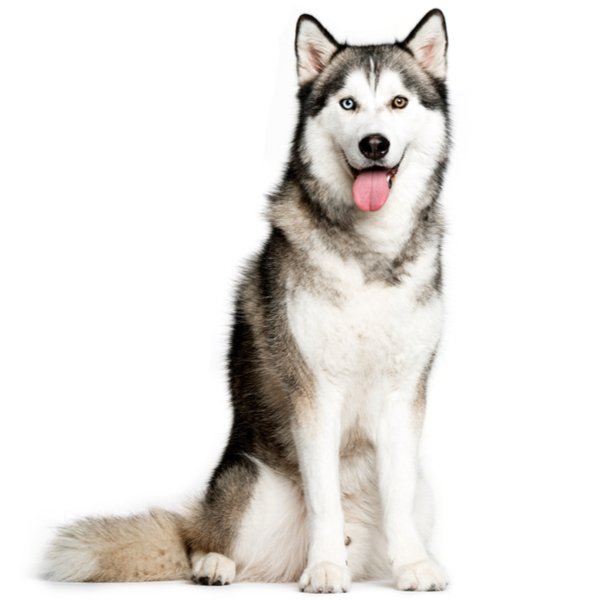

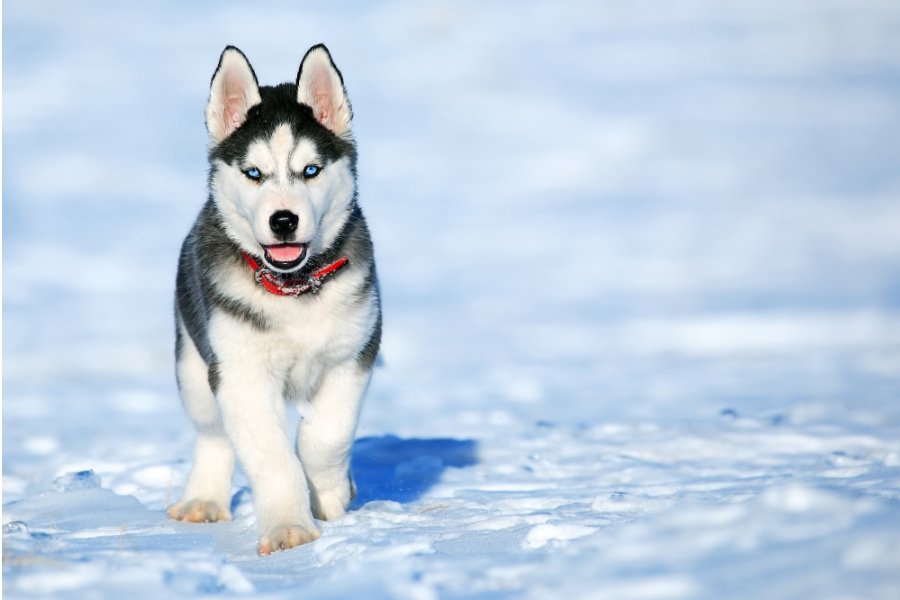


The Siberian Husky breed was developed by the Chukchi tribe over 4,000 years ago in Northern Siberia. The word ‘Chukchi’ literally translates to ‘rich in reindeer’ or ‘reindeer people’. Siberian Huskies were much-valued members of these tribes, pulling sleds and even acting as dog duvets to keep the children warm at night.
In 1908, these dogs were brought over to Alaska to compete in sled dog races, where they became consistent winners. They quickly established themselves as fast runners with astonishing endurance despite their size. In 1925, the breed became famous for saving the city of Nome, Alaska, by battling harsh blizzards over 674 miles to distribute life-saving medications during a diphtheria pandemic.
Leonhard Seppala was the first person to introduce Siberian Huskies to the rest of the United States. He travelled to New England with his sled team in the 1920s. His dogs won every race which caught the attention of local dog enthusiasts. Over the years, more Siberian Huskies were brought over from Alaska and Seppala began breeding them, alongside Elizabeth Ricker. The breed achieved recognition from the American Kennel Club in 1930 and the Siberian Husky Club of America was founded in 1938.
It’s not clear when Siberian Huskies became popular in other countries around the world. Seppala sold a team of these dogs to the French film company Pathe and it's believed that the first Husky arrived in England in 1912. However, it wasn’t until 1968 that the first known pair of Siberian Huskies were imported to the UK by Mr and Mrs Proffitt after they came across the breed while travelling in Europe. The Siberian Husky Club of Great Britain was formed in 1977.
While most of today's Siberian Huskies are adored family pets, many still pull sleds in local races and perform a winter sport known as skijoring with their human companions.
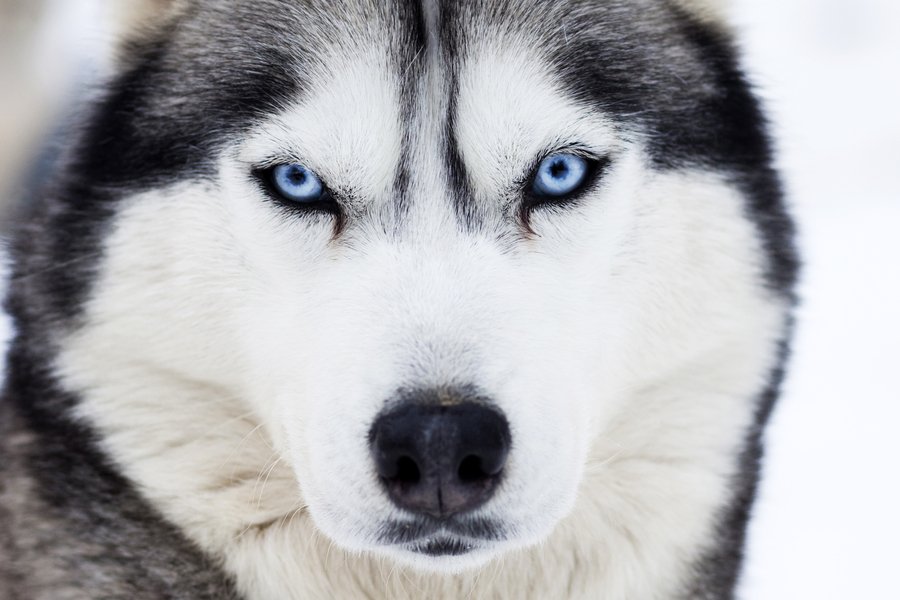
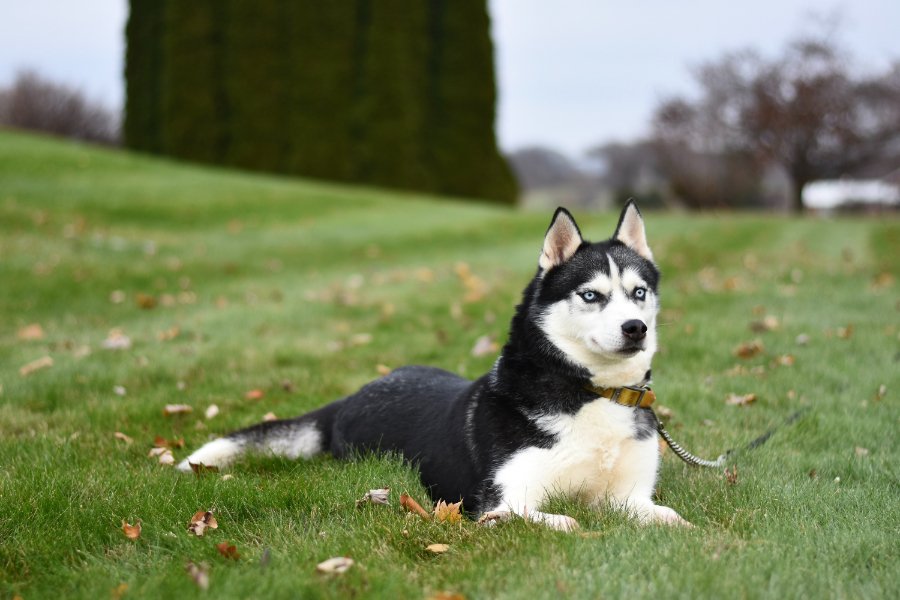
Known for their wolf-like looks, Siberian Huskies are very appealing and attractive dogs. These friendly canines are medium-sized but very light on their feet. Males are often heavier than their female counterparts.
A Siberian Husky’s head is well-proportioned to the rest of its body, with a chiselled fox-like appearance. The skull is fairly domed with a moderately long muzzle that tapers toward the nose, which can be tan, black, flesh, or liver-coloured depending on coat colour.
Siberian Huskies have almond-shaped eyes that are well-set on their faces. The eyes can be in any shade of brown or blue and sometimes can have one eye of either colour. They have moderately sized ears that are set closely together and triangular in shape. They sit high up on the head and erect.
These dogs have strong jaws with a perfect scissor bite. Their moderately long necks are thick and arch proudly. They have well-laid-back shoulders and well-muscled front legs that are straight but never heavily boned.
A Huskies’ body is strong, with a level topline, and a deep chest. They have well-sprung ribs and loins that are slightly arched. This dog breed has powerful hindquarters and well-developed upper thighs.
The medium-sized feet are oval-shaped and compact. They are covered in fur and somewhat webbed between each of the toes. These traits helped to keep the dog warm in the harsh Siberian climate. Huskies have fox-like tails that are covered with fur. They are carried slightly curved when the dog is alert.
Siberian Huskies have a dense double coat that is medium in length. The undercoat is thicker and softer than the outer coat. The guard hairs, on the other hand, are straight, lying close to the body. All colours and markings are acceptable, except merle.
Siberian Huskies are smart but relatively independent and determined. They adore human company but they do require strong, gentle training from puppyhood. Siberian Huskies are known to be highly social so they are very welcoming to all people, including children.
Siberian Huskies are pack dogs. So, they require a human companion that will assert their role as alpha in the household. However, do not be surprised if they test your position in the pack and try to take control every now and then. These dogs are willful, playful, and a little mischievous!
Because of their thick, dense coats, Huskies can struggle in warmer weather. They may even dig up the garden to create cool burrows for themselves.
Siberian Huskies do not bark; however, they do enjoy howling, chirping, and whining. Huskies are very excitable dogs that are not afraid to express their emotions! They are particularly noisy when playing or exercising. This is one of their most unique and endearing traits but it can get out of hand easily if they are not appropriately trained. These dogs are not suitable for apartment living.
Huskies make incredibly loyal companions that will entertain you on a daily basis with their silly antics and incredible zest for life.
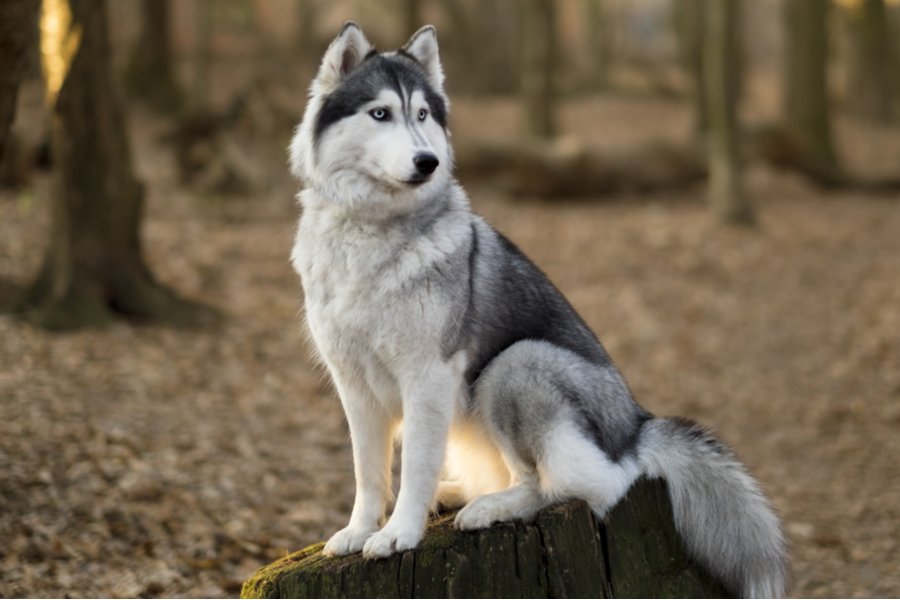
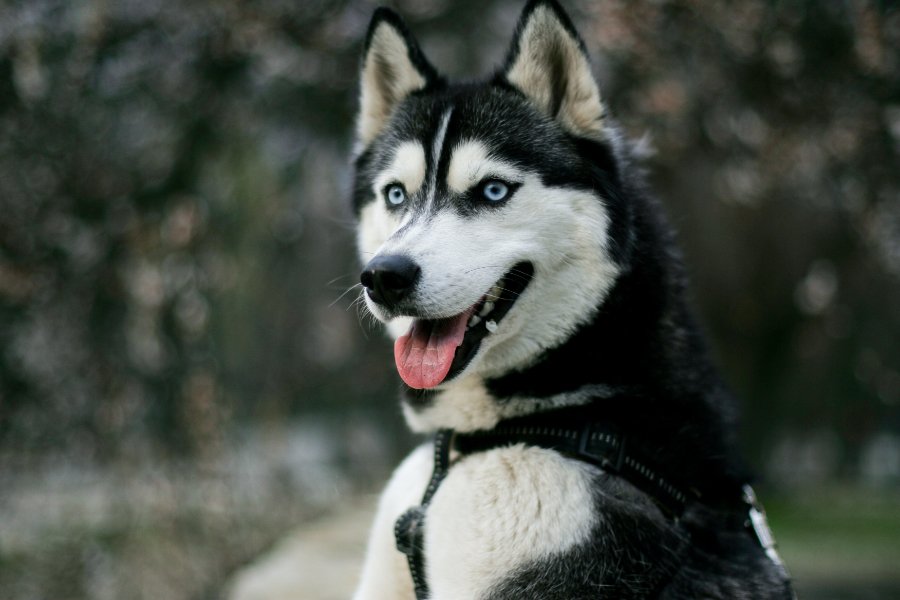
Early, consistent training is a must with Siberian Huskies. You may also want to invest in advanced obedience classes. Putting in the effort in the beginning will make life much easier in the long run!
Crate training is an essential tool that breeders frequently recommend. This keeps your Husky safe. It also gives them their own secure area to go to when they feel overwhelmed, stressed, or tired. Note, though, that the crate should never be used as a form of punishment.
Huskies love to run. They also have very high prey drives. So, leash training is important with this breed. Do not let your dog off the leash until he has been appropriately trained.
Siberian Huskies respond well to firm, positive reinforcement training. Keep sessions fun and don’t be afraid to mix it up a bit to keep their keen minds engaged. Constant boundaries and rules are a must but refrain from dominance training or harsh training methods. These are likely to have the opposite effect and cause your Siberian Husky to act out.
The Siberian Husky is considered to be a “natural” dog breed. These dogs are eccentrically self-cleaning and require only a few baths a year unless they are muddy or due to be shown in conformation shows. Brush their thick coats at least twice a week to keep them in good condition. Their undercoat will shed twice a year. So, it is crucial to constantly “rake out” the old coat by using a pin brush and metal comb.
For their dental health, brush their teeth at least 2 or 3 times a week to eliminate tartar buildup and bacteria. Daily brushing is much better if you want to avoid gum disease and bad breath.
Trim their nails once or twice a month to avoid painful tears and other health problems. Remember that a dog’s toenails have blood vessels in them, so if you cut too far, you can cause them to bleed. It is best to ask a veterinarian or groomer for pointers if you are not experienced or comfortable with nail trimming.
Their ears must be checked weekly for redness or a foul odour because these two symptoms can indicate an infection. You should also wipe the outer portions of the ears with a cotton ball dampened with a vet-approved, gentle, pH-balanced ear cleaner.
As you groom your Siberian Husky, check for rashes, sores, or signs of infection such as inflammation, redness, or tenderness on the skin, eyes, nose, mouth, and feet. Their eyes must be clear, with no discharge or redness. Your thorough weekly exam will help you to identify potential health problems early on.
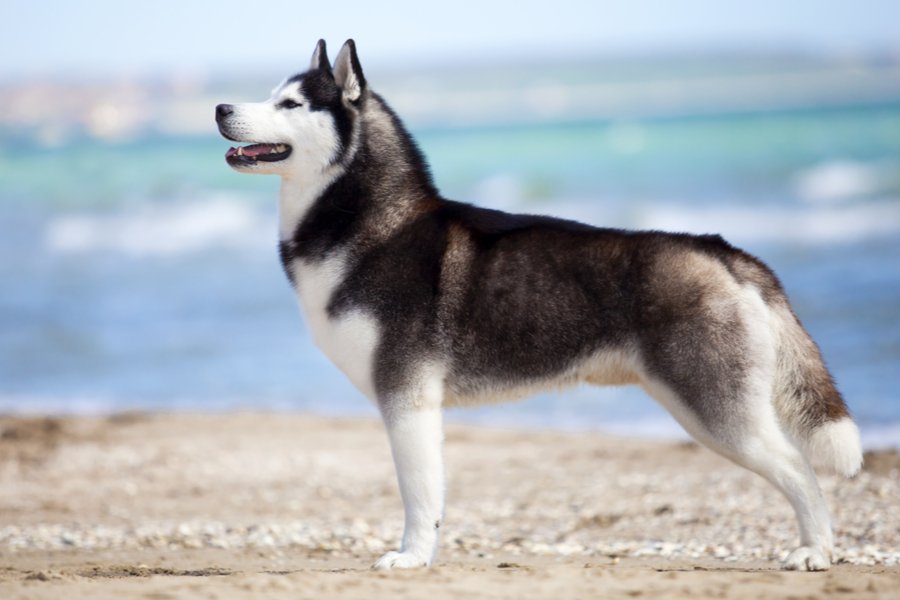
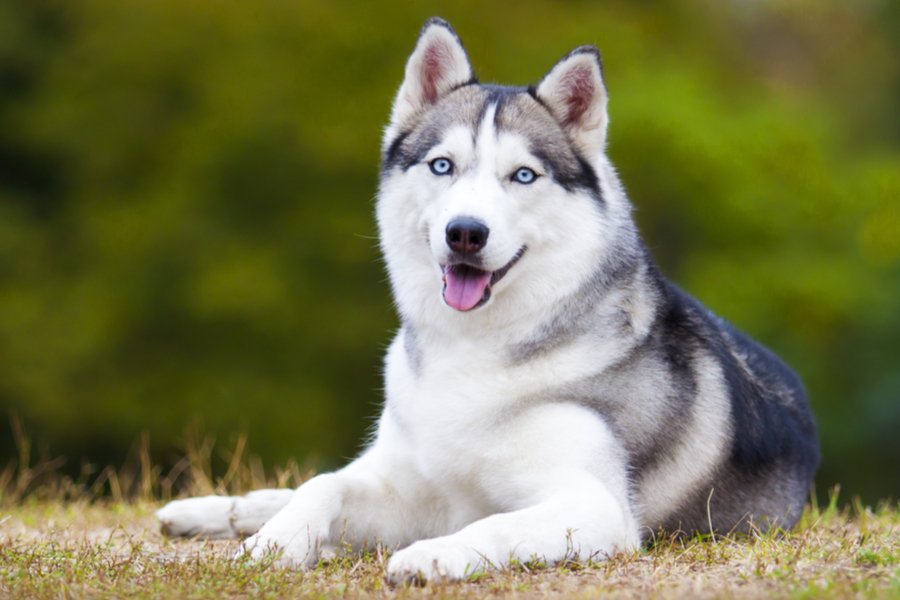
Siberian Huskies are a relatively healthy dog breed. However, like all breeds, they are susceptible to developing certain health problems. Only purchase a Siberian Husky puppy from a licensed breeder who will be able to perform DNA tests to check for any underlying conditions that may affect their quality of life as they age.
Here are some of the more common health issues seen in Siberian Huskies:
Siberian Huskies make excellent canine companions for households with children. This dog breed can be very lenient with children, but they must be supervised when around young kids, like all other dog breeds.
Siberian Huskies also generally get along well with other dogs, especially if they have grown up together. However, it is still vital to ensure your Siberian Husky has been well socialised from puppyhood to avoid any dominance issues.
Bear in mind that these dogs have strong prey drives. So, they are not suitable for homes with smaller pets such as cats, rabbits, and hamsters.
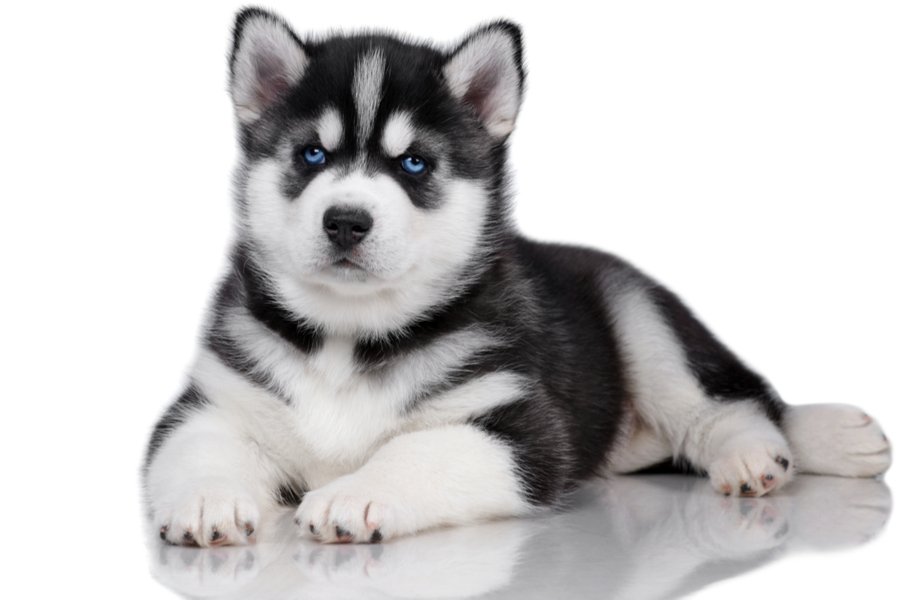
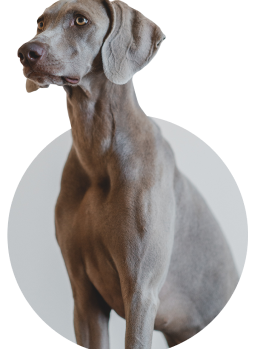
We can connect you with Breeders that are specialized in this particular breed.
See available puppies

Need some advice?
Whether you're a first time pet owner, an experienced pet owner, a new or long-time breeder, or just curious about pets, we've got you covered!

January 17, 2024
What Is The Personality Of Russian Blue Cats?
Russian Blue cats are most known for their distinctive shimmery blue-silver coat and piercing green eyes. However, this breed’s calm and gentle temperament is what makes them shine the most in the feline world.

January 17, 2024
10 Facts About Russian Blue Cat Breed
Russian Blues are one of the most aesthetically stunning cat breeds, with a gorgeous plush silvery coat and vibrant green eyes. However, it’s not only their appearance that is beautiful; their nature is too.

January 17, 2024
How To Choose The Right Cat Breed for You
Cats can make the most fantastic animal companions; they are adorable, friendly, and loving. However, not all felines are created equal. There are many different breeds, of which each has its unique personality traits.
Need some help?
Contact us to speak to our friendly advisor, who will gladly help you find your dream pet!



We are registered in England and Wales under registration number 12568840,
and our registered office is at 58-60 Kensington Church Street, W8 4DB London, England.
© 2023 The Pedigree Paws